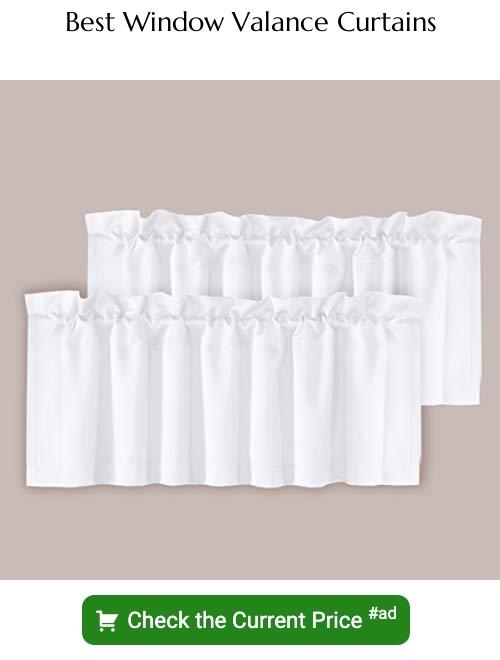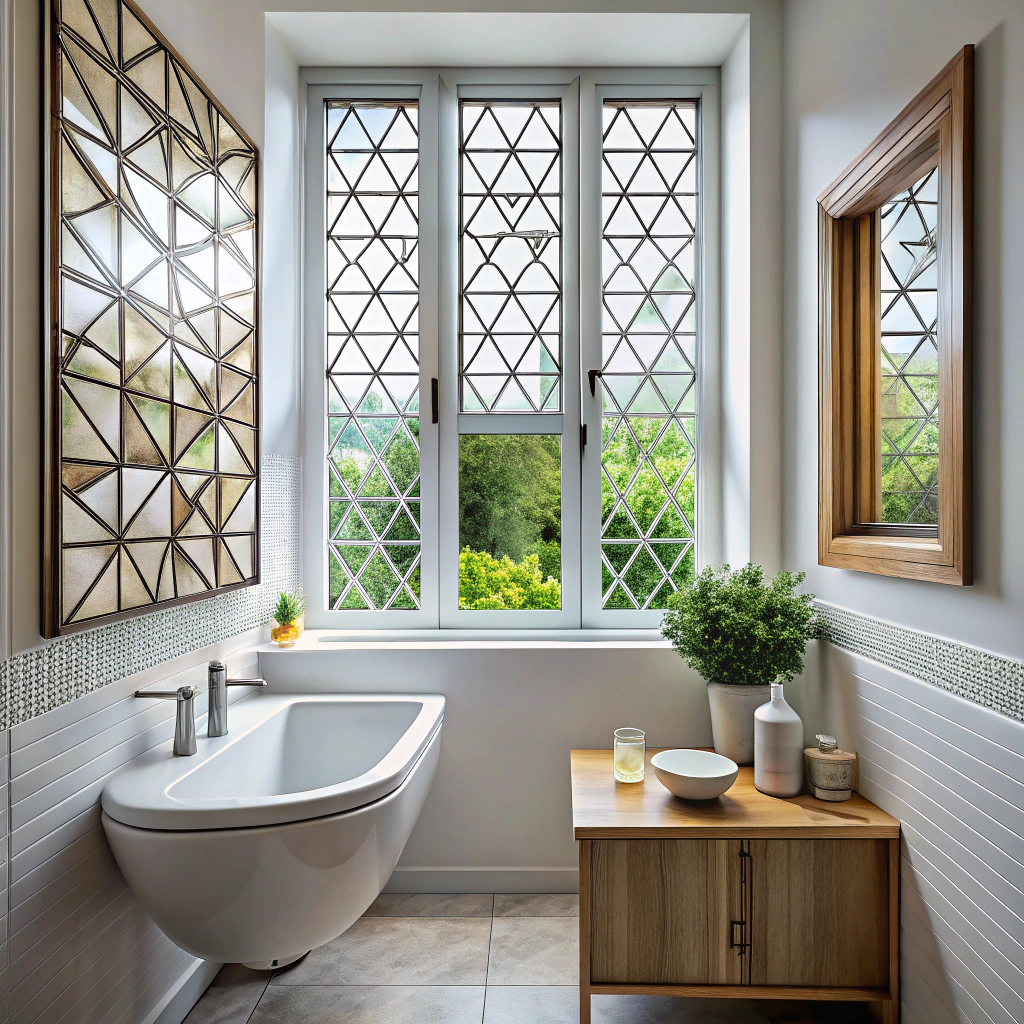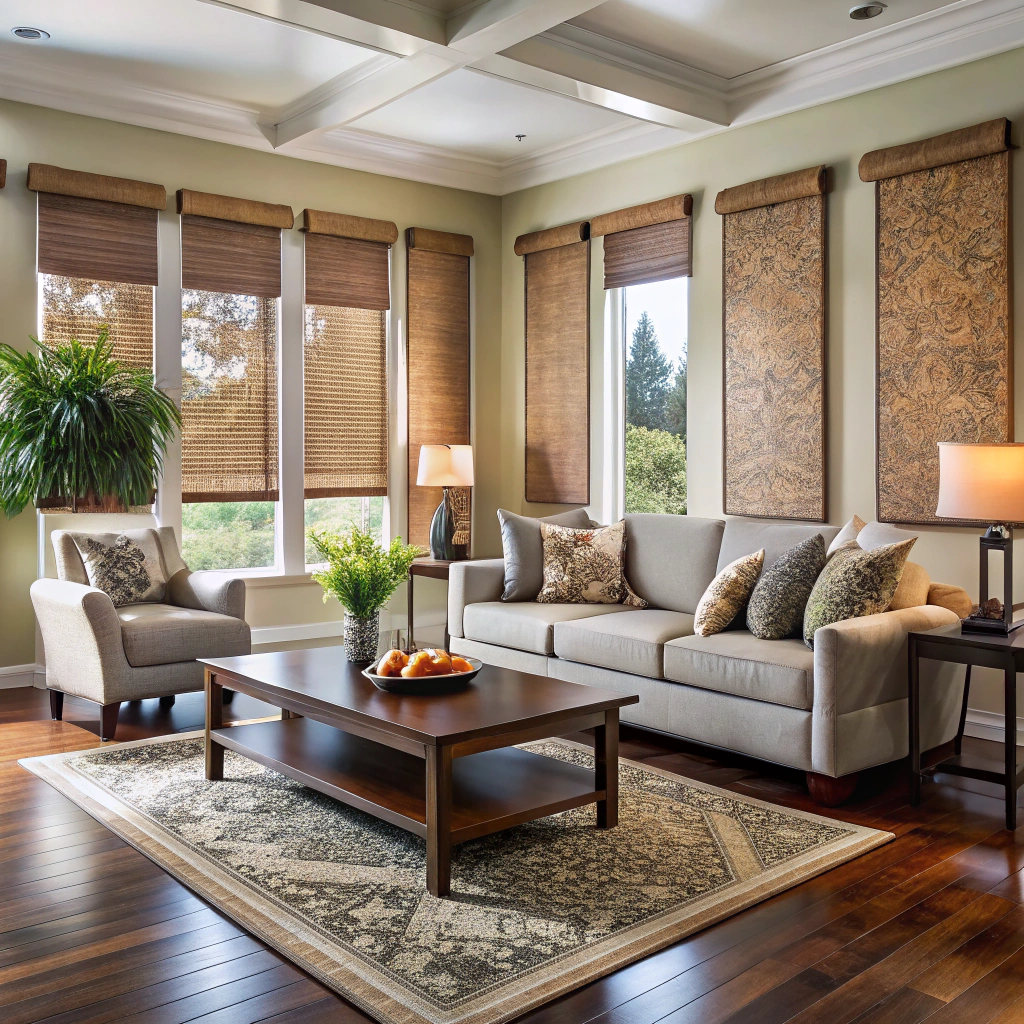Choosing the correct length for a valance can significantly enhance your room’s aesthetic, because a well-fitted valance not only adds elegance but also provides the illusion of a taller window.
Key takeaways:
- Valance length should complement the size and style of the window.
- Consider the purpose of the valance: decorative or functional.
- Valance length should seamlessly integrate with the existing decor.
- Standard valance lengths range from 10 to 18 inches.
- Custom valances offer flexibility in length and design.
Determining the Proper Length of a Valance
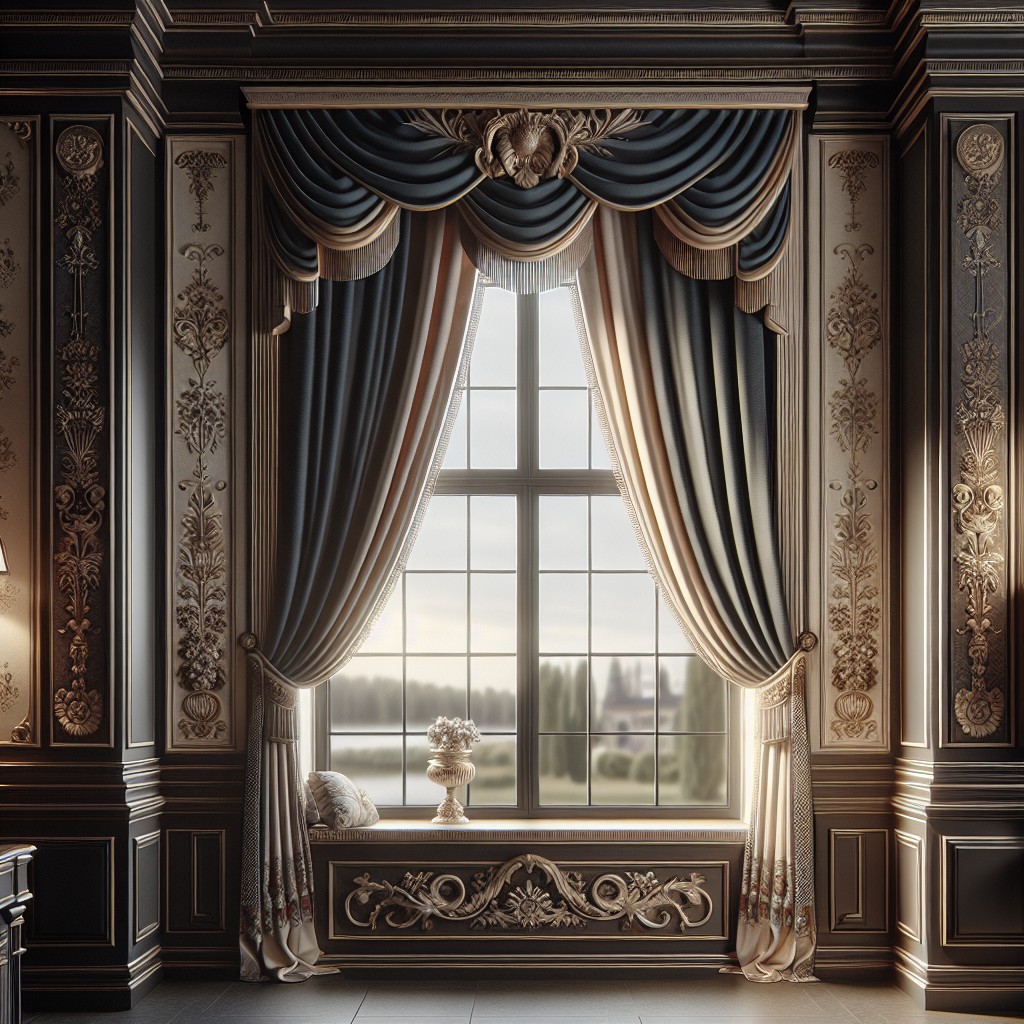
The proper length of a valance hinges on achieving balance between aesthetics and the functional role of the window treatment. Here are key considerations to inform your choice:
Window Proportions: The ideal valance length should complement the size of the window. Typically, the length is 1/6th the overall window height.
Design Style: More elaborate styles, like swags or cascades, may require longer lengths to showcase their full design.
Purpose: If the valance operates solely as a decorative piece, a shorter length suffices. For sun control or privacy, a longer valance might be more appropriate.
Existing Decor: The valance should seamlessly integrate with the room’s decor. Consider the space it occupies—avoid overwhelming a room with small windows by using excessively long valances.
Standard Valance Lengths
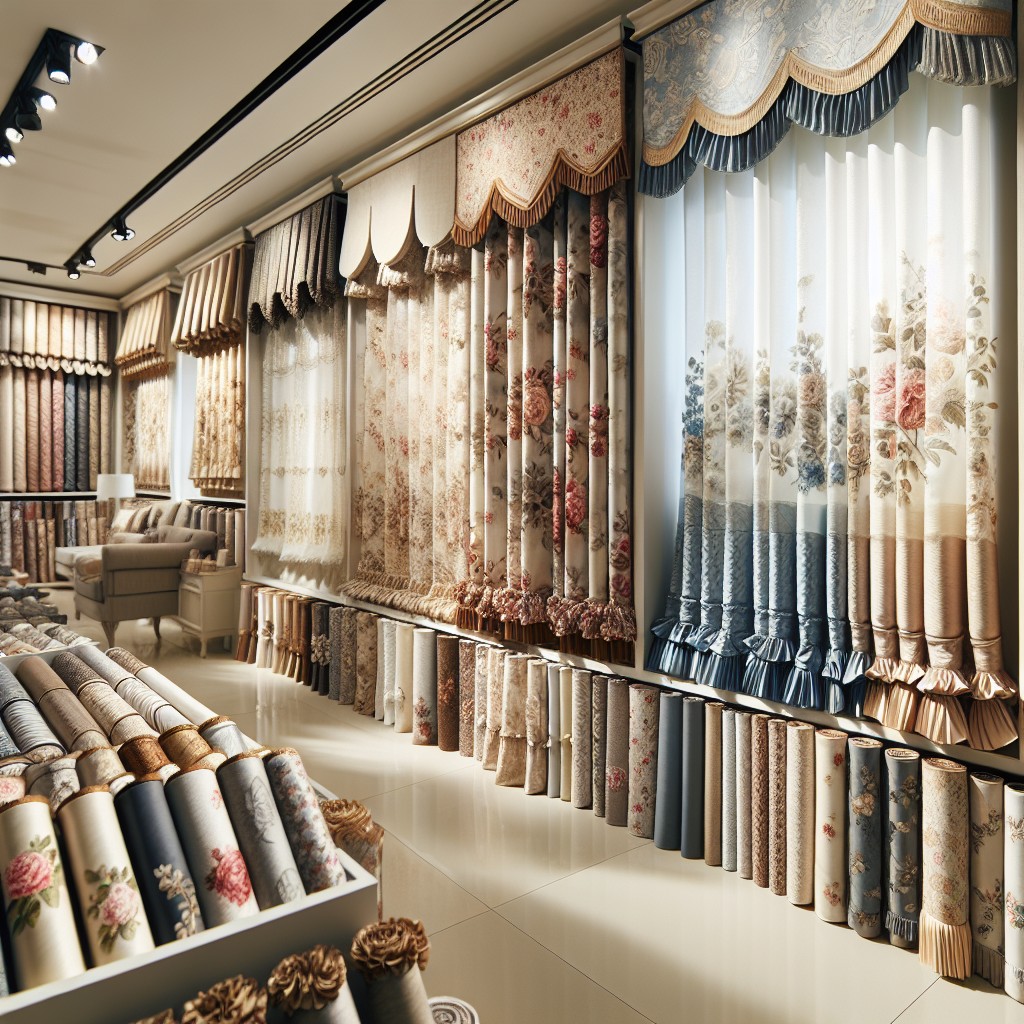
Standard valance lengths typically range from 10 to 18 inches. This measurement includes the rod pocket but does not include any headers or ruffles above the rod pocket.
When considering a standard valance, factor in whether the space allows for a shorter or longer drop. A shorter valance, around 10 to 12 inches, tends to look more contemporary and less formal. On the other hand, a longer valance reaching 18 inches suits traditional décor better and can add a sense of grandeur to the room.
It’s important to measure your window before purchase and consider the look you aim to achieve, as standard valance lengths offer a starting point but may need to be adjusted based on individual space and style requirements.
Custom Valance Lengths
When opting for a custom valance, flexibility in design allows you to tailor the length to your specific needs and tastes. To achieve a well-proportioned look:
- Consider the scale of the room—larger rooms can handle longer valances without being overwhelmed.
- Factor in the existing decor; custom lengths can complement or highlight other design elements.
- Take into account the window’s dimensions—custom lengths can correct perceived window imbalances.
- Decide on the feeling you want to evoke; a longer valance can create a sense of luxury, while a shorter one tends to feel more casual and crisp.
- Be mindful of functional applications—longer valances might impede natural light or views if not measured thoughtfully.
Remember, your custom valance should not just fit your window, but also bring out the best in your room’s unique character.
Window Size Considerations
The dimensions of the window strongly influence the appropriate length of a valance. For balanced aesthetics, consider the following points:
- Width Ratio: Ideally, the valance should be roughly 1.5 to 2 times the width of the window. This ensures enough fabric for a pleasing gather without overcrowding.
- Proportion to Window Height: A valance typically covers roughly the top one-fifth to one-third of the window. Longer valances can make short windows appear taller, while shorter valances can keep the appearance of high windows in check.
- Sill Length Windows: For windows that reach down to a sill, the valance should hang just enough to cover the top frame of the window, usually around 4 to 6 inches in depth.
- Floor Length Windows: With long windows or sliding doors, a longer valance can complement the vertical lines. Aim for a length that extends about 6 to 10 inches down.
- Sightlines: Ensure the bottom of the valance doesn’t obscure important views or cut through the glass in a way that visually truncates the window.
- Fullness and Light: Take into account how much natural light you want in the room and the fullness of the valance, which can affect how it hangs and covers the window area.
Measuring the window accurately before selecting a valance ensures a proportionate and visually pleasing window dressing. Tailoring the length to the window size creates an integral look within the room’s design.
Impact of Ceiling Height On Valance Length
Ceiling height plays a critical role in selecting the right valance length to achieve a balanced look. High ceilings demand longer valances to prevent windows from appearing dwarfed, while lower ceilings can benefit from shorter valances to avoid overwhelming the space.
When dealing with high ceilings, consider extending the valance beyond the usual 15-20 inches to draw the eye upward and add visual height to the room. Conversely, in rooms with lower ceilings, opt for a valance that hangs just above the window frame to maintain a sense of openness.
Remember that the valance should harmonize with the room’s proportions, accentuating the window without dominating the wall.
Fabric Type and Fullness
Selecting the right fabric for your valance greatly influences its appearance and function. Heavier fabrics, like velvet or brocade, offer a rich, full look and may require less length to achieve a sense of fullness. In contrast, lightweight materials such as cotton or linen bring a breezy, casual feel and might need extra length to display a proper drape.
When it comes to fullness – the width of the fabric in relation to the window width – aim for a ratio that complements your style preference. A standard guideline is 2 to 2.5 times the window width for a full effect, ensuring graceful folds. For a tailored, flat appearance, a lower fullness ratio closer to 1 to 1.5 times the window width is sufficient.
Keep in mind, more fabric means more volume. Adjust the length of your valance accordingly to avoid overwhelming the window. Take note of the fabric’s pattern as well; allow enough length to showcase the design without cutting it off awkwardly. Remember, the characteristics of your chosen fabric will either enhance the elegance or detract from the overall aesthetics.
Influence of Valance Style On Length
The style of valance you choose has a direct impact on the length that will be most appropriate for your window treatment. Here are the key considerations for different valance styles:
- Rod Pocket Valances: Typically designed to gather along the rod, these valances require enough length to achieve a slight pooling effect at the bottom, providing a classic, full appearance.
- Tab Top Valances: The hanging loops may add extra length to the valance. Consider this extension when measuring, ensuring you include the tabs to achieve desired window coverage.
- M-Shaped Valances: Known for their decorative dips and swags, the lowest point of the ‘M’ determines how long the valance needs to be. Take into account the desired swag depth when measuring.
- Straight Valances: Versatility in style, these can range from short and modern to long and traditional. Determine the length based on how much of the window you’d like to cover and the statement you want to make.
In each case, factoring in the specifics of valance style ensures that the final window treatment complements the room decor and meets functional requirements for privacy and light control.
Rod Pocket Valances
Rod pocket valances slide onto the curtain rod through a pocket sewn into the top of the fabric. This design provides a gathered, ruffled effect that is ideal for a traditional or country style home.
The length of a rod pocket valance should be such that the bottom edge of the valance covers the top of the window frame by an inch or two. For an average window, this typically translates to a valance length between 15 to 18 inches. However, ensure the length does not obstruct important features of the window or block too much light.
When measuring, take into account the length of the rod pocket plus the valance length to achieve your desired window coverage. Remember that a longer valance will create a more formal look while a shorter valance can feel more casual and relaxed.
Tab Top Valances
Tab top valances provide a modern and casual look to your window treatment, showcasing a series of fabric loops (tabs) that slide directly onto the curtain rod.
To ensure aesthetic harmony and functionality, consider these points:
- Measure from the top of the curtain rod to where you want the valance to fall, factoring in the length of the tabs, which typically add 2-3 inches to the overall length.
- Account for the visual space the tabs occupy; a shorter valance fabric with longer tabs can create an illusion of height in a room with low ceilings.
- Aim for a valance length that is 1/6th the height of the overall window treatment for balanced proportions.
- Remember that tab top valances should not cover more than the top third of the window to maintain natural light and a view.
- Choose a valance that extends at least an inch wider than the window frame on each side to create a clean finished appearance without gaps.
M-Shaped Valances
M-shaped valances, characterized by their distinct peaks and valleys, lend an elegant touch to window treatments. When selecting the appropriate length, consider the depth of the M shape. A deeper dip necessitates a longer overall length to maintain balance. It’s important to ensure the central dip doesn’t obscure too much of the window, potentially reducing natural light.
To achieve a harmonious look, the drop of the M’s peak should typically be one-third to one-half the total length of the valance. For example, if the valance is 18 inches long, the peak’s drop might range from 6 to 9 inches.
For windows where privacy is not a concern, a shorter peak can create a more open and airy feel while still delivering visual interest. Additionally, keep in mind the location of the window’s midpoint when positioning an M-shaped valance to ensure symmetry in the window’s appearance.
Straight Valances
Straight valances offer a clean and modern look that suits a variety of decorating styles. The ideal length typically extends about one-sixth the overall height of the window.
Here are key points to keep in mind:
- Proportion is key: Ensure the valance is proportional to the window size. A very long straight valance on a small window can seem overwhelming, while a too-short valance can appear skimpy.
- Account for hardware: When measuring for length, consider the space needed for mounting hardware, which can add to the overall drop of the valance.
- Factor in sill length: If the window has a sill, aim for the valance to end just above it, unless you desire a full-length look to cover the entire window.
- Minimalist approach: Straight valances are inherently simple, which makes them suitable for rooms where a lack of fuss is preferred or where other patterns and textures take center stage.
- Visual extension: A slightly longer valance can create the impression of a larger window when desired, especially when using outside mount methods to hang the valance.
Remember that while guidelines are helpful, ultimately, select a length that complements your space and meets your functional requirements.
Adjusting Valance Length for Layering
When incorporating multiple layers of window treatments, adjust the length of your valance to ensure visual harmony and functionality. Here’s how to strike the right balance:
1. Overlapping Layers: If layering over curtains or blinds, extend the valance 1 to 3 inches below the headrail or rod to conceal hardware.
2. Balance and Proportion: Aim for the valance to cover one-third of the overall window treatment, leaving the remaining two-thirds for the under layers.
3. Allow for Light: Ensure the layered valance does not impede natural light. Shorten the length if necessary to maintain a well-lit space.
4. Mind the Details: Account for patterned fabrics or trims when layering, and adjust the length to showcase designs without crowding.
Following these guidelines assures that your layered window treatments are functional while displaying a polished, cohesive look.
Valance Length for Inside Vs. Outside Mount
When mounting a valance, the choice between an inside mount and an outside mount can greatly influence the length required for optimal visual appeal and function.
Inside mounts sit within the window frame and typically call for a shorter valance length, contributing to a neat, tailored look that works well in minimalist or modern interiors. Ensure enough length to cover the top of the window but not so much that it overcrowds the glass area.
Outside mounts, on the other hand, attach to the wall or molding around the window. This approach grants you the liberty to extend the valance beyond the window’s actual width. For an outside mount, factor in additional length to achieve an aesthetic balance and perceived window enlargement.
Always consider the added space above and beyond the window for outside mounts, as greater length may be necessary to cover hardware and create a polished finish. Keep in mind that an outside mount can conceal less attractive window frames or hardware, providing a clean line and an elongated look to the wall.
Measuring Tips for Accurate Valance Length
Begin by measuring the width of the window, including any molding or trim you plan to cover; this ensures the valance isn’t too narrow. For outside mounts, add 2-4 inches on both sides to extend beyond the window frame, creating the illusion of a larger window.
Decide on the valance drop length, typically the distance from the top of the rod to the point where you want the valance to end. Take into account the window’s proportions: shorter lengths for small windows and longer for tall windows.
To determine the rod placement, hold the tape measure to where you’ll hang the rod (which is usually a few inches above the window frame) and measure down to your desired drop point.
For valances to be paired with curtains, measure the length of the curtains to ensure harmonious layering. The valance should cover the curtain’s uppermost part without appearing disconnected.
Keep in mind the valance fullness when measuring. A fuller valance requires more fabric and possibly a slight increase in length due to the gathering.
Double-check your measurements for accuracy before making any cuts or purchases. Small errors can result in a poorly-fitting valance.
Use a metal tape measure for precision. Cloth tapes can stretch and lead to incorrect measurements.
Record your measurements, noting the width first, then the length (for example, “50W x 18L“), to keep them organized and understandable when selecting or creating your valance.
Common Missteps in Choosing Valance Length
Selecting a valance that is too short may not fully cover the window’s headrail, resulting in a disjointed appearance where the mechanism is unintentionally exposed. To ensure full coverage, measure beyond the headrail.
Many homeowners overlook the importance of scale when choosing a valance. A valance that is disproportionate to the window size can upset the room’s balance, creating an overwhelming or underwhelming effect.
Ignoring the room’s existing decor can lead to a mismatched aesthetic. Valances should complement the room’s style and colors, tying the look together rather than standing out awkwardly.
Hanging the valance without proper clearance can cause it to brush against window frames or sills, leading to potential fabric wear or soiling. Ample clearance allows the valance to hang freely and maintain its shape.
Failing to consider the fabric’s pattern repeat often results in a visual cut-off, especially prominent in larger, bold patterns. Ensure the valance length accommodates the pattern to achieve a seamless look.
Avoiding these common errors will result in a well-proportioned, harmonious window treatment that enhances both the window and the room’s overall design.
Aesthetics Vs. Function in Valance Length Selection
Selecting the length of a valance involves balancing aesthetic appeal with practical function. When prioritizing aesthetics, consider how the valance complements the overall design of the room. A longer valance can create a sense of grandeur and sophistication, while a shorter one may appear modern and crisp.
Conversely, function plays a pivotal role when privacy, light control, or showcasing architectural features take precedence. For instance, a shorter valance allows more natural light to enter the room and may be ideal for showcasing an attractive window frame or a stunning view.
Remember, no single length suits all situations. The key is to weigh the visual impact against how the valance will affect the room’s functionality, striking a harmonious balance that serves both purposes.
Style & Size Guides
Style guides can be a valuable resource when deciding on valance size as they encapsulate both decor trends and traditional design principles. For instance, a contemporary space may call for a minimalistic valance that is narrower, complementing a sleek aesthetic, whereas a classical design could be enhanced with a more opulent, fuller fabric choice.
Size guides are equally important, as they provide a quick reference based on window dimensions:
- For standard windows (24-36 inches wide), a valance length of 14-18 inches is typically balanced.
- Large windows or sliding doors may require longer valances, generally 18-24 inches to maintain proportion.
- Keep in mind the ‘rule of thirds’ in design, where the valance might comprise approximately one third of the window’s total length for a pleasing visual effect.
Remember, these guidelines serve as a starting point. Always tailor choices to personal style and room features for the best outcome.
How to Guide for Layering Valances
When layering valances over curtains or blinds, consider the harmony between the patterns and colors. Choose a dominant color from the patterned fabric for your valance if the curtains are patterned and vice versa for a cohesive look.
For a traditional style, extend the valance 3 to 6 inches beyond the width of the curtain. For added depth and dimension, use a double rod to hang the valance in front of the curtains.
Keep in mind that layering should complement the window size; avoid overcrowding small windows. Ensure the valance covers the curtain hardware for a clean finish.
Remember, proper layering enhances both the functionality and aesthetic of your window treatments.
FAQ
What is the average length of valances?
The average drop length of outside-mounted valances is typically between 17 to 21 inches for walls with 8-foot ceilings with the length increasing in proportion to the height of the ceiling.
How far down should a valance hang?
A valance should generally hang about 2 to 6 inches down over the top of the window and window frame, or if space is limited, it should be hung just below the ceiling.
How long should a valance be for a 60 inch window?
For a 60-inch wide window, the valance should be roughly between 120 to 210 inches wide when laid flat.
How full should a valance be?
Your window valance should ideally be 2 ½ times the fullness of your rod, which means for a 40" wide rod, a 100" wide valance would be appropriate.
Does the style of the valance impact its ideal length?
Yes, the style of the valance significantly impacts its ideal length.
What factors should be considered when determining the perfect valance length?
The ideal valance length should be determined by considering factors such as window size, desired effect, and overall room aesthetics.
Can the length of a valance affect the perceived height of a window?
Yes, a longer valance can make a window appear taller by drawing the eye upwards.
Recap
